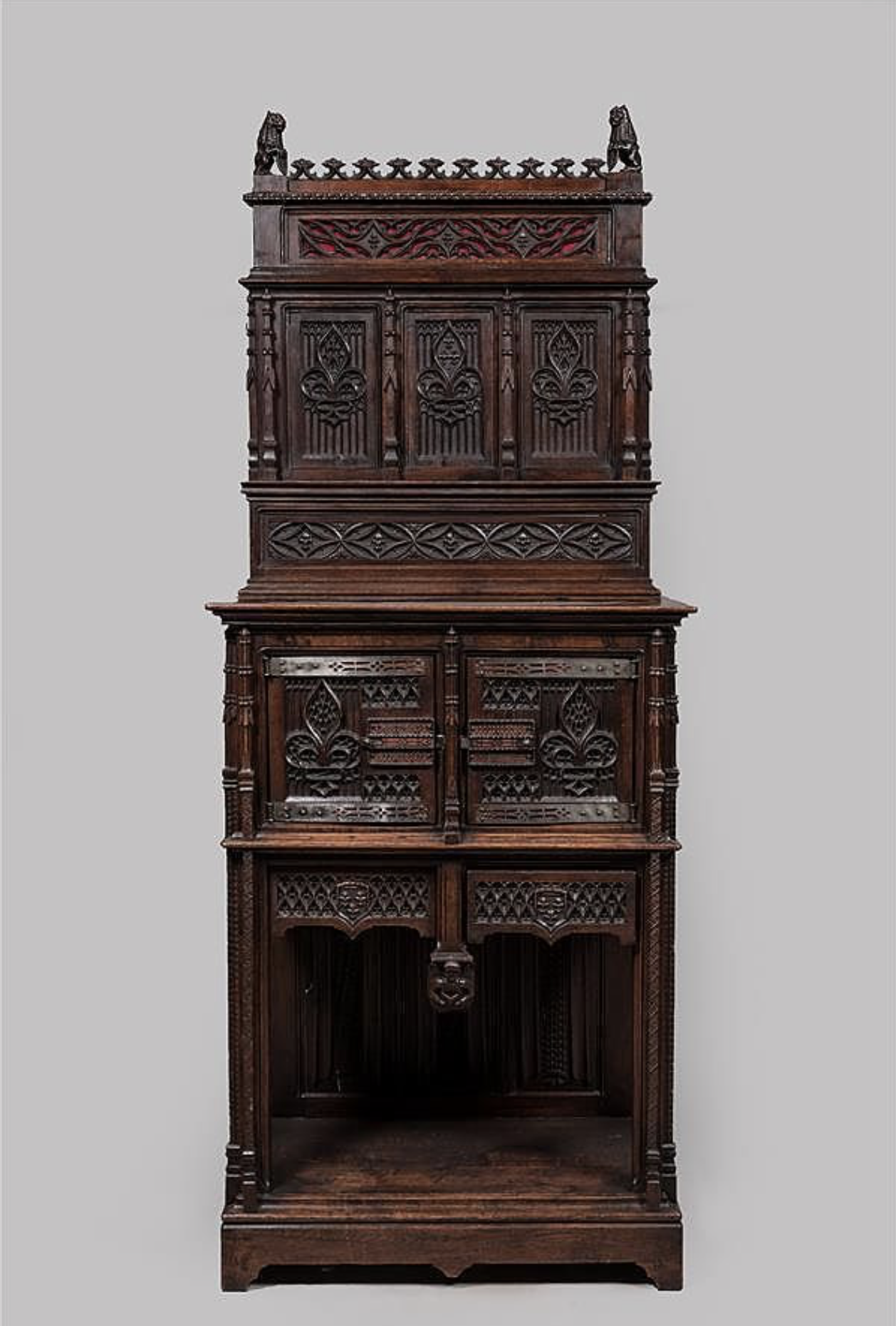Neogothic Credenza from the Palace of Compiègne (SOLD)
Former property of an acclaimed painter who worked at the French Court during the Second Empire: A refined, romantic, and fantastic 19th century expression of the late 15th century high gothic style.
This updated gothic style is referred to as “troubadour” and it was especially popular in French aristocratic circles who yearned for the bygone days of chivalry, lords and ladies. It is important to differentiate very fine custom ordered pieces in the gothic style, commissioned by personalities close to the court, from standard 19th century gothic “inspired” pieces.
The quality and complexity of the sculpture evident in this two tiered piece, plus the prominence of Royal Fleur de Lys emblems, distinguish it from more frequently encountered pieces in the gothic style made during the 19th century. This credenza is in fact on par with pieces in the gothic style exhibited in 2019 at the “Paris Romantique” exhibition which showcased French masterpieces of the romantic period.
The quill written label still conserved on the back confirms first impressions. It indicates that this piece was delivered to Félix Brissot de Warville (1808-1892) at the Palace of Compiègne. Now remembered as a painter whose works are conserved in various public collections, (including the Boston Museum of Fine Art), Brissot de Warville was serving as the estate administrator of the Royal Palace of Compiègne during the Second Empire.
The original home for this piece was built by King Louis XV, and it was one of three seats of royal government (the others being Versailles and Fontainebleau). Napoleon ordered it to become an imperial domain in 1807, at which point the palace was restored by the preeminent interior architects and cabinetmakers of the time. This piece entered the palace sometime after 1852 when the 2nd French Empire was created (or 1856 when Napoleon’s grandson, the then reigning Napoleon III made Compiègne his autumn residence).
Although aesthetics and quality lend value and significance to this piece, it is interesting to examine these other details which shed light on its perhaps unexpected pertinence to History and Art History. For instance, Felix Brissot de Warville’s grandfather was a key figure in the French Revolution and a far more conspicuous figure than his grandson. Jacques Pierre Brissot de Warville was the man who was given the keys to the Bastille when the iconic prison was liberated on the first 14th of July. Without delving further into the extensive biography of Brissot de Warville Senior, it is important to note that, in Royal service, he traveled to America in 1788 to study how to emancipate enslaved populations. He played a critical role in abolishing French colonial slavery before he was guillotined in 1793.
Dimensions: Height: 94.5 in. Width: 37.4 in. Depth: 24.5 in.
Myers & Monroe, LLC



